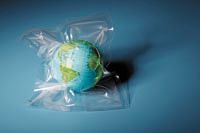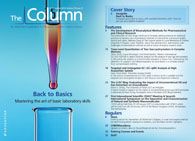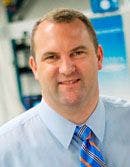Monitoring Plastic Exposure in Seabirds
Researchers from CSIRO Oceans and Atmosphere Flagship in Hobart, Australia, have published a new approach to monitoring plastic exposure in live birds. Featured in the journal Methods in Ecology and Evolution, the study describes the sampling of preen oil collected from seabirds using a simple swabbing method for gas chromatography coupled to mass spectrometry (GC–MS) analysis.1

Photo Credit: Henrik Weis/Getty Images
Researchers from CSIRO Oceans and Atmosphere Flagship in Hobart, Australia, have published a new approach to monitoring plastic exposure in live birds. Featured in the journal Methods in Ecology and Evolution, the study describes the sampling of preen oil collected from seabirds using a simple swabbing method for gas chromatography coupled to mass spectrometry (GC–MS) analysis.1
The entry of plastics into the environment is one of the biggest threats to marine birds — ingestion of plastics can result in entanglement, stomach ulcers, starvation resulting from a physical stomach block, and poisoning from chemicals present on or within the plastic. In the past, scientists monitoring ingestion of plastics in live birds have relied on lavage, a stomach flushing technique. Hardesty told The Column: “Lavage typically yields an incomplete sample of the digested contents, however, so one would have to lavage a bird multiple times for a complete sample — which can be stressful for birds. Otherwise, as seen in much of the literature, scientists sample from beach washed birds or those that died after being brought in to rehabilitation facilities — and these are a biased sample.”
The team began the study to develop a less invasive method of determining plastic ingestion in live and healthy birds. Hardesty said: “We wanted a way to sample live, seemingly or apparently healthy birds in a way that was minimally intrusive, not-stressful, and would be hugely valuable in terms of the data and insights that could be yielded. Seabirds are excellent marine ecosystem sentinels, and we now have the tools available to look at the pervasiveness of the plastics pollution problem on a global basis.”
Phthalate esters are widely used in the production of plastics to add flexibility, but are known to migrate into the environment and accumulate within animal fatty tissue and preen oil from the uropygial gland of birds. The team captured live birds by hand and sampled preen oil using a single swabbing technique; they also sampled dead birds using the same method or excising the entire gland. A total of 28 birds of five different species were sampled, of which eight were dead shearwaters from Phillip Island. The live birds were from Port Fairy in Victoria, Heron Island in northeast Queensland, and the Hautman Abrolhos islands in western Australia. Swabs were subsequently extracted and analyzed by GC–MS.
The paper reports that the dead birds showed a range of plastic contamination based on stomach content analysis that was reflected by the presence of dimethyl phthalate (DMP) and bis (2-ethylhexyl)-phthalate (DEHP) in preen oil. Preen oil samples from live birds from Port Fairy and in northeast Queensland contained dibutyl phthalate (DBP) and DEHP; however, there were no phthalate esters detected in samples taken from birds on the Hautman Albrolhos islands.
Hardesty told The Column that the developed method is simple, quick, requires minimal handling time, and can be used to sample at a population level for multiple species. She said: “This will allow us to look at the extent and pervasiveness of plastics ingestion in a much larger number of species so that we have the science needed to inform policy and decision-making.” — B.D.
Reference
B.D. Hardesty, Methods in Ecology and Evolution DOI: 10.1111/2041-210X.12277 (2014).
This story originally appeared in The Column. Click here to view that issue.

A Novel LC–QTOF-MS DIA Method for Pesticide Quantification and Screening in Agricultural Waters
May 8th 2025Scientists from the University of Santiago de Compostela developed a liquid chromatography quadrupole time-of-flight mass spectrometry (LC–QTOF-MS) operated in data-independent acquisition (DIA) mode for pesticide quantification in agriculturally impacted waters.
Investigating 3D-Printable Stationary Phases in Liquid Chromatography
May 7th 20253D printing technology has potential in chromatography, but a major challenge is developing materials with both high porosity and robust mechanical properties. Recently, scientists compared the separation performances of eight different 3D printable stationary phases.

.png&w=3840&q=75)

.png&w=3840&q=75)



.png&w=3840&q=75)



.png&w=3840&q=75)












